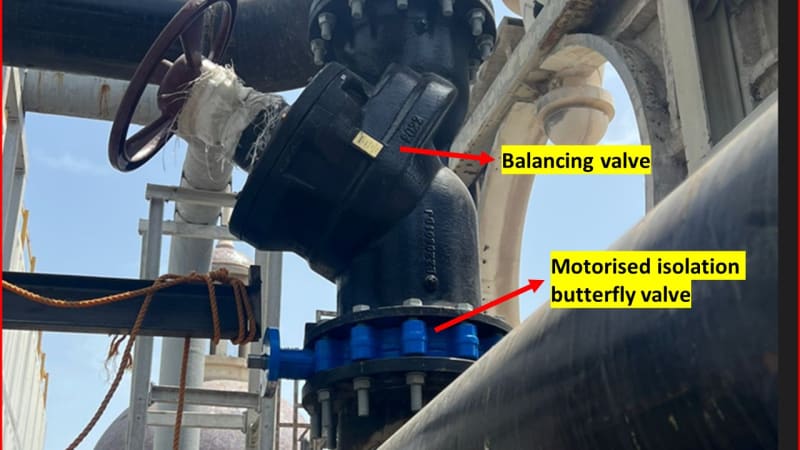The fittings of the cooling tower intake water connection were coupled with a balancing valve (DRV) and motorized isolation valve in a newly installed retrofit project that I observed today that was still in process. why this old method was chosen by the concerned engineer in modern installations. Why not let the design engineer choose an isolated butter fly valve with a modulating actuator, is what I'm trying to say. To regulate the flow at the design rate and meet the dual goals of balancing flow and isolation, the valve should have a selection point that matches the necessary Kv. I hope you can understand what I'm trying to say. am I correct?

The problem with the world is that intelligent people are full of doubts, while stupid ones are full of confidence.
-Charles Bukowski-

The problem with the world is that intelligent people are full of doubts, while stupid ones are full of confidence.
-Charles Bukowski-
